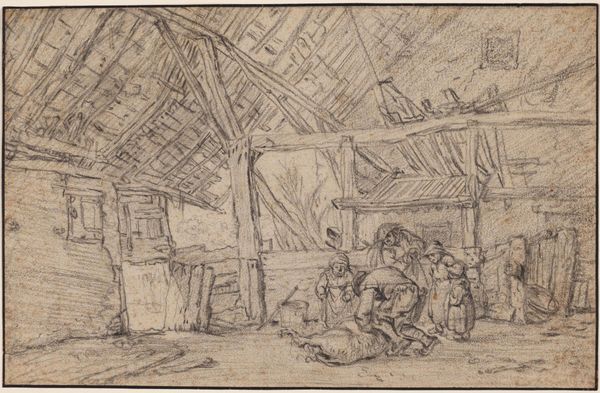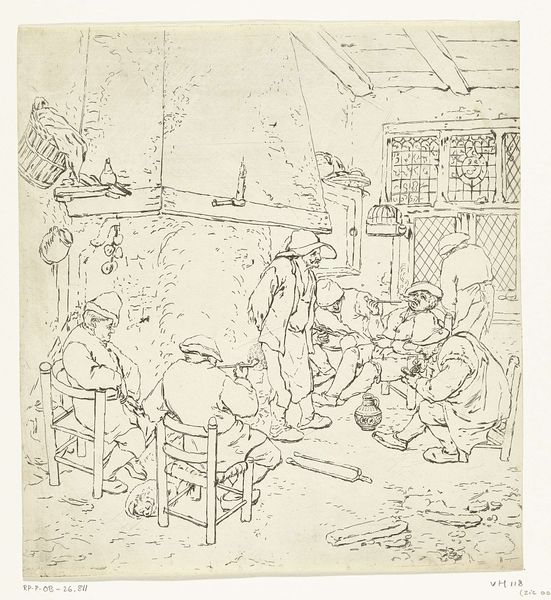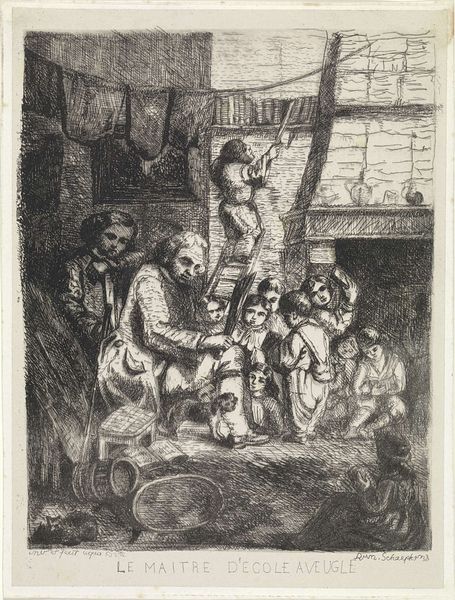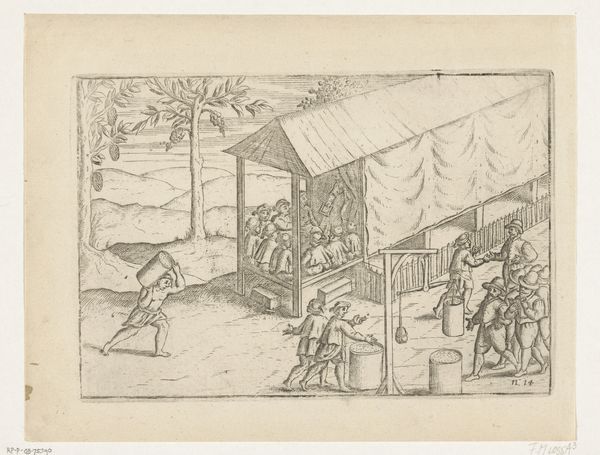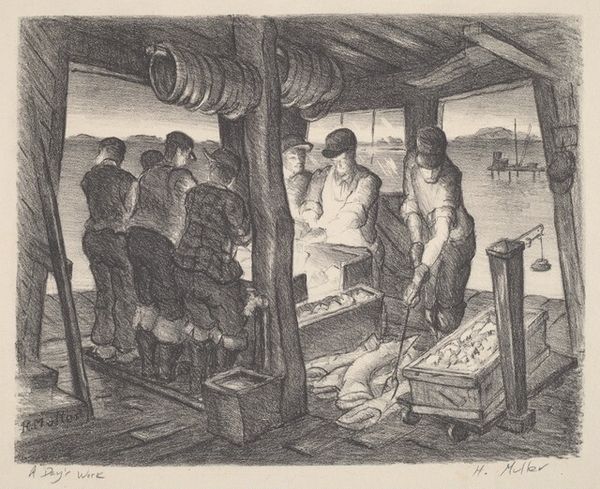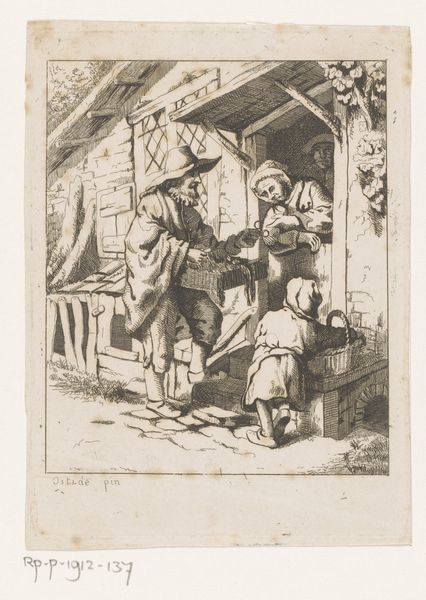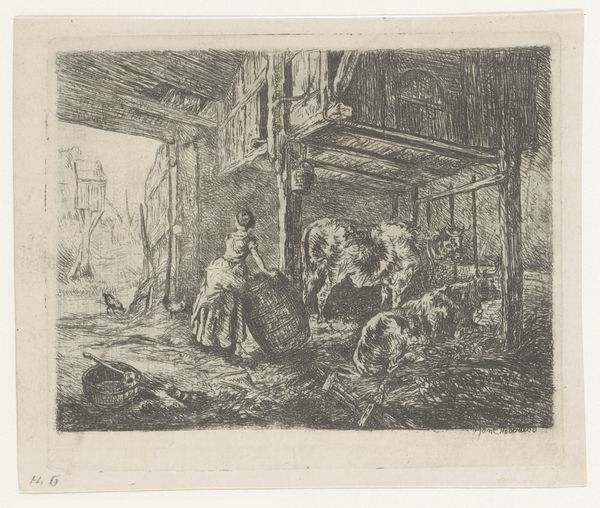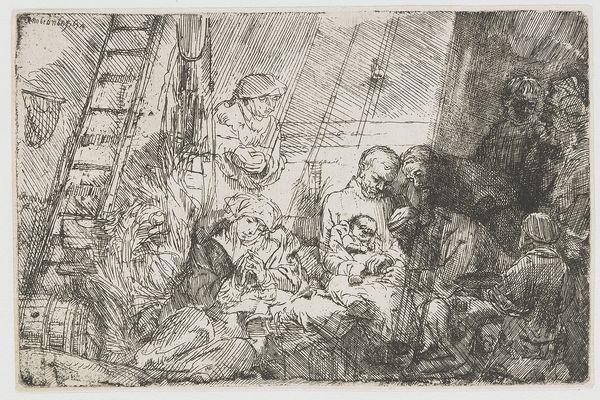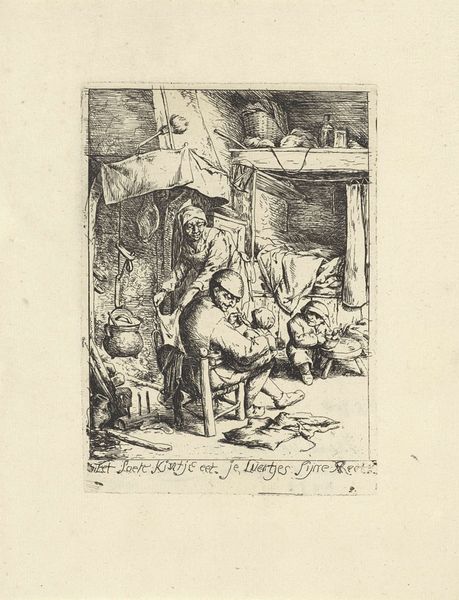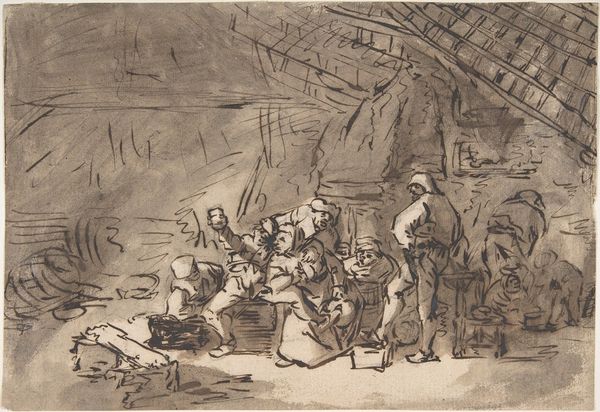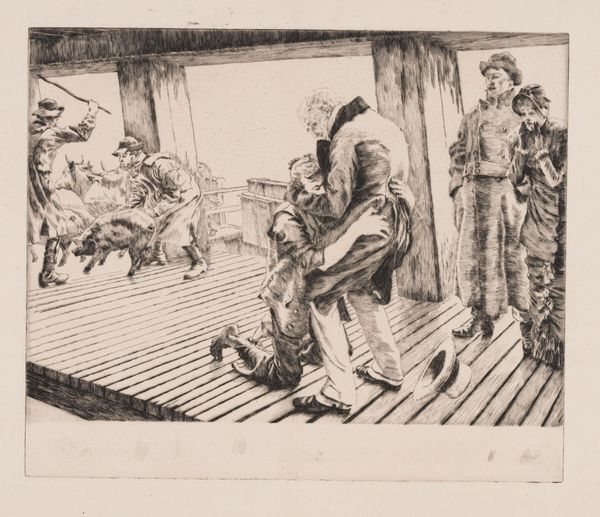
drawing, etching, ink
#
drawing
#
comic strip sketch
#
narrative-art
#
baroque
#
mechanical pen drawing
#
pen illustration
#
pen sketch
#
etching
#
old engraving style
#
figuration
#
personal sketchbook
#
ink
#
pen-ink sketch
#
pen work
#
sketchbook drawing
#
history-painting
#
storyboard and sketchbook work
Dimensions: height 75 mm, width 78 mm
Copyright: Rijks Museum: Open Domain
Curator: We’re looking at "Illustration for Boccaccio's Decameron" by Romeyn de Hooghe, dating back to 1697. It's an etching made with ink, currently held in the Rijksmuseum collection. Editor: Immediately, the energy strikes me—a flurry of angular lines depicting dynamic action on what appears to be a ship, though the perspective seems skewed and unsettling. There's a very deliberate chaos here. Curator: Absolutely. De Hooghe was a master of propaganda and visual rhetoric. This work reflects the bawdy and often politically charged narratives within Boccaccio's Decameron, reflecting societal critiques through the guise of storytelling. We see that in how he depicts the characters as caricatures of human flaws. Editor: Note how the lines are thick in some areas, creating a sort of crude but effective chiaroscuro effect to emphasize the dramatic tension. There's a central female figure, almost statue-like in her stance, yet everything swirls around her. Is she meant to represent something symbolic? Curator: Perhaps Fortune or even Justice in a satirical guise, considering the themes Boccaccio explored. What is interesting is the performative aspect in his art mirroring theatrical presentations that resonated with its audience in the 17th century, revealing a culture grappling with religious, social, and power structures through its narratives. Editor: I'm fascinated by the texture. The close hatching used in certain areas gives depth but it also renders the composition quite busy overall, like an intentionally overcrowded stage. The details of that foreground element draw the eye—a structural component leading into the turmoil, making the viewer complicit. Curator: The engraving's lines have a distinct character due to de Hooghe's approach. They carry more weight than simple delineation; they represent cultural commentary that would be consumed widely, reinforcing ideals or even subverting expectations during its time. This would have been printed, shared, discussed... It’s a vital lens onto the Baroque public sphere. Editor: It is hard not to feel this etching as somewhat cynical or darkly comical. All this flurry of action packed onto a relatively small scale creates a powerful dissonance. Curator: Yes, precisely! De Hooghe’s choice to create accessible and often pointed illustrations invited critique and engagement during a period where art served far more purposes than purely aesthetic appreciation. Editor: I will definitely spend more time examining its layers, allowing my reading of those lines to unveil what Romeyn de Hooghe seems to tell us beyond just the story on the page.
Comments
No comments
Be the first to comment and join the conversation on the ultimate creative platform.

